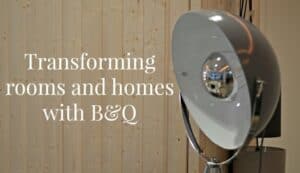Just before Christmas, we received an email from our energy supplier E.ON informing us about the Smart Meter rollout that is happening across Britain. Energy suppliers are on a drive to get as many households as possible to replace their current energy meters with self-reading Smart Meters. The change over to a Smart Meter will bring an end to estimated bills and having to send in monthly meter readings. Partnered with an in-home display, householders are then able to track energy usage as well as the amount they are spending in near real-time.

How To Get A Smart Meter Installed
As someone who seems incapable of submitting a meter reading on time, I immediately headed over to the website to register my interest. Taking a look at the E.ON Smart Meter section I was able to find out further details about what is a Smart Meter and the benefits of switching to a Smart Meter. After logging into our energy online account I was able to submit our interest in the switchover and was advised that I would be contacted once the rollout was happening in my local area.
Following this initial registering of interest, we were contacted around two months ago to check that we were still interested in getting Smart Meters installed. As well as run through the type of meters we had, where they are located and also whether you have credit or pre-paid meters (Smart Meters are available to both credit and pre-paid customers). Alongside this, E.ON asked if we were happy for meter readings to be taken digitally from the Smart Meter. Also how frequently you are happy for this to take place (monthly, weekly or every 30 minutes). Once all the details had been confirmed an appointment for an engineer to attend was made.

Engineer Visit
When the engineer appointment was booked we were advised that it would take approximately one hour per energy meter to replace. With each energy supply being switched off for approx 20-30 minutes during the switchover (so make sure you’ve made a drink beforehand). As I had Piglet home with me during the appointment she couldn’t understand why the TV was no longer working. Thankfully I had downloaded one of her cartoons on to the tablet to occupy her (she has a room full of toys but obviously needed electronic stimulation at the time).
In order for the energy supply to be switched off, access to the fuse box and gas shut off valve was required. Luckily ours are easy to find but I know in our old home they were hidden in the cupboard of doom under the stairs (which would require much tidying before accessing).
Once the Smart Meters are installed the engineer will double check the gas appliances and that the electricity had come back on correctly – much to Piglet’s relief that CBeebies could be enjoyed once again. It is at this point that the engineer hands over the in-home display meter (which looks scary) but will soon become a bit of an obsession.

In-Home Display
The in-home display meter has become my latest technology obsession. It gives me the ability to view our energy usage throughout the day – as well as the cost of this energy (not including standing charge or VAT).
Enabling me to track the surges and see whether I’m running my home appliances more efficiently. For example, double checking that the dishwasher and washing machine is full before switching on. Switching light bulbs to energy saving bulbs, and of course, learning to switch lights off as they are no longer required.
More information on Smart Meters
For further information on Smart Meters please visit your energy suppliers website.

Collaborative Article
Photo Credit: Kari Shea Sarah Dorweiler































No Comments